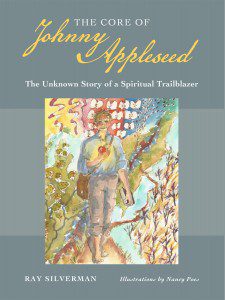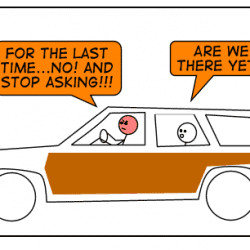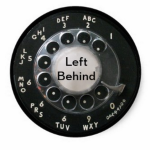 I, like most kids in the United States, learned about Johnny Appleseed in ways that made him seem more like the Tooth Fairy or Batman than an actual historical figure. There’s at least as much myth about the man, born John Chapman, than there is recorded historical fact. But his impact on the emerging West after the Revolutionary War is undeniable.
I, like most kids in the United States, learned about Johnny Appleseed in ways that made him seem more like the Tooth Fairy or Batman than an actual historical figure. There’s at least as much myth about the man, born John Chapman, than there is recorded historical fact. But his impact on the emerging West after the Revolutionary War is undeniable.
In his book, “The Core of Johnny Appleseed,” Ray Silverman offers much more about the man, the entrepreneur, the philanthropist and the theologian than most would ever glean from their grade-school yarns. In fact, much of the ideas we have about Johnny Appleseed actually are culled from an old Disney Cartoon rather than from reality.
Did he romp around, talking to animals with a metal pot for a hat? Not likely, although he was a regular St. Francis of the Wild West when it came to care for God’s creatures and creation. Did he run along trails, haphazardly tossing apple seeds here and there while whistling? No. Johnny actually was quite the savvy, businessman, it turns out, recognizing that the frontier land grants required settlers to plant 50 fruit trees in their first year (to help avoid real estate speculation). It also turns out that there weren’t too many Safeway stores out in the wilderness, so people welcomes his tree nurseries for multiple reasons.
But perhaps most interesting was that Johnny Appleseed was driven by the ingenious theological teachings of Emmanuel Swedenborg, who was a bit of a heretical radical for his time. While Jonathan Edwards and his ilk were castigating the Christian faithful about being sinners in the hands of an angry God, Swedenborg offered a far different view – one fervently embraced by Johnny, a product of the Congregationalist Church.
Essentially, Swedenborg suggested that God was pure Love and that humanity, in truly embodying such Love, could not help but manifest it through works of kindness, compassion, service and generosity. Religious labels and all matter of dogma fell away in the face of this Love, a belief that understandably angered the religious leaders of the day who preferred to maintain tighter reins on the salvation of their flock.
John Chapman’s love of Swedenborg’s theology compelled him to venture out, helping settlers fulfill their land grant agreements while offering much needed sustenance in otherwise meager settings. Like any great businessman, he saw a win-win opportunity and seized it.
Silverman’s book, like Appleseed himself, is fairly simple and to the point, rectifying much that was misunderstood about this important historic figure, while also using his legend as an opportunity to introduce Swedenborg’s fairly heady ideas to a broader audience. Consider it a primer for much more in-depth examinations of the man’s work, if readers are so inclined.
Regardless, the book is an affirming and engaging look at Johnny Appleseed, the cartoonish figure of my childhood imagination who, now, will never be quite the same. He was a true hero of the American frontier, just as Emmanuel Swedenborg plowed fresh intellectual soil with his work, some four centuries ago.
*
 Note: This post is a part of a sponsored discussion on The Core of Johnny Appleseed. Our partners do not pay for reviews, for obvious reasons, but Patheos works with publishers and filmmakers who want to make a difference in order to host conversations on the themes raised in their books and films.
Note: This post is a part of a sponsored discussion on The Core of Johnny Appleseed. Our partners do not pay for reviews, for obvious reasons, but Patheos works with publishers and filmmakers who want to make a difference in order to host conversations on the themes raised in their books and films.











